North Park beverage blogger blends Indian ingredients with American culinary culture
A conversation with Natasha Mahapatro, who publishes cocktail and zero proof drink recipes on her blog, The Tash Mashup
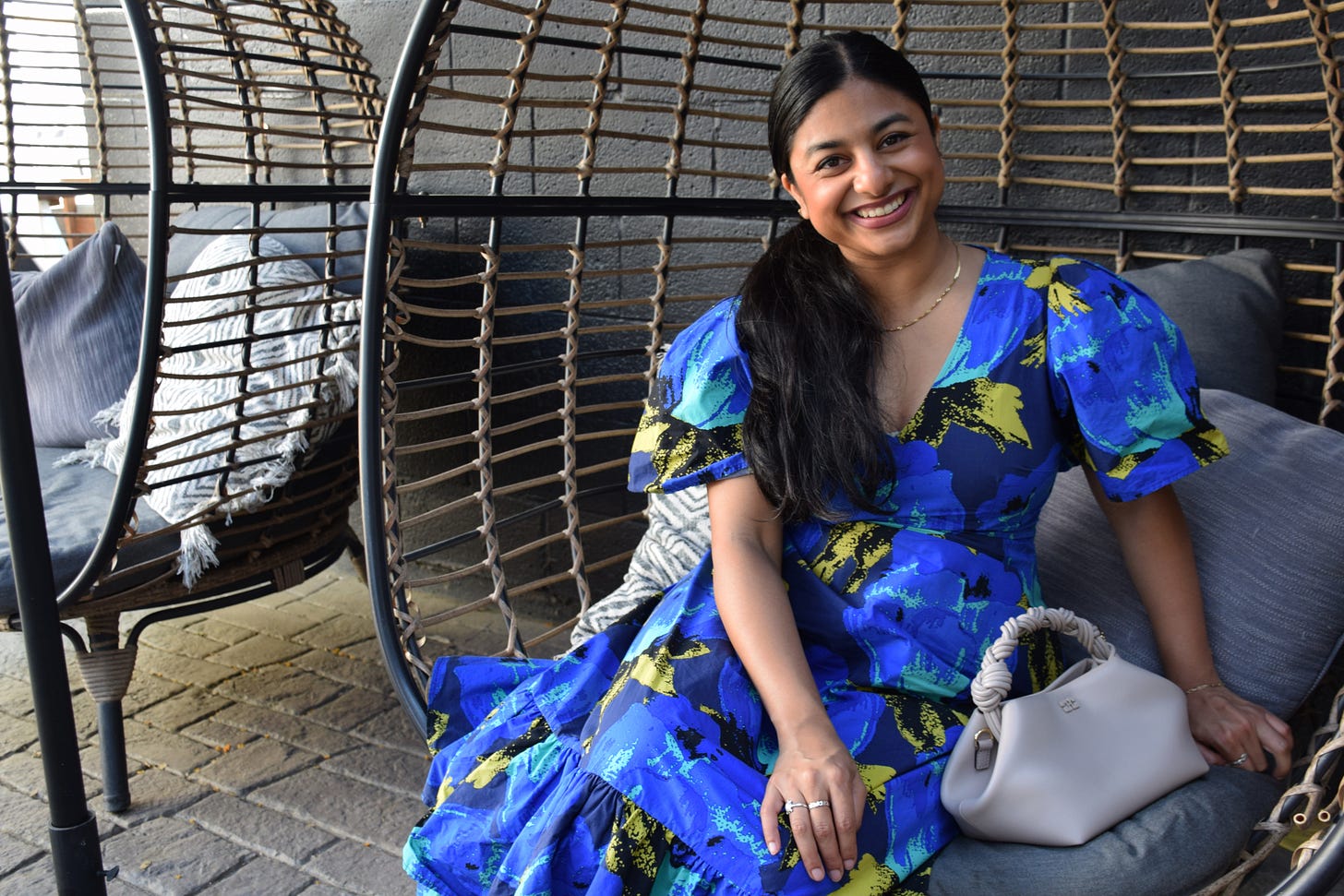
North Park resident Natasha Mahapatro’s love for her traditional Indian culture is evident in the selection of recipes she publishes on her beverage blog, The Tash Mashup.
From her Avocado Chaat Masala Margarita and Pomegranate Rooh Afza Punch, to the Gulab Jamun Old Fashioned and Achaar Bloody Marys, each cocktail melds Indian flavors with classic cocktail concepts.
But navigating between American and Indian culture wasn’t always easy for Mahapatro.
“Growing up I always lived on this identity of not being Indian enough, or not being American enough,” the 31-year-old said.
Years of self-exploration and cooking meals for guests at a supper club she hosts helped Mahapatro find a new sense of connection to her cultural roots.
“Food was really helpful in getting me there because it was something that I'd always grown up loving,” Mahapatro said. “(Food) is what connects me back most — outside of my family — to my roots and to my culture.”
Born and raised in Seattle, Mahapatro said she was fortunate to spend every summer visiting family in Odisha, a state in Eastern India from which her parents emigrated to the United States.
Reflecting on those summers, she said what stands out most from the foods in Odisha is how spice plays with other ingredients in the dishes.
“It's all about balance,” Mahapatro said. “My grandma has always been so good about doing that. Everything is layered.”
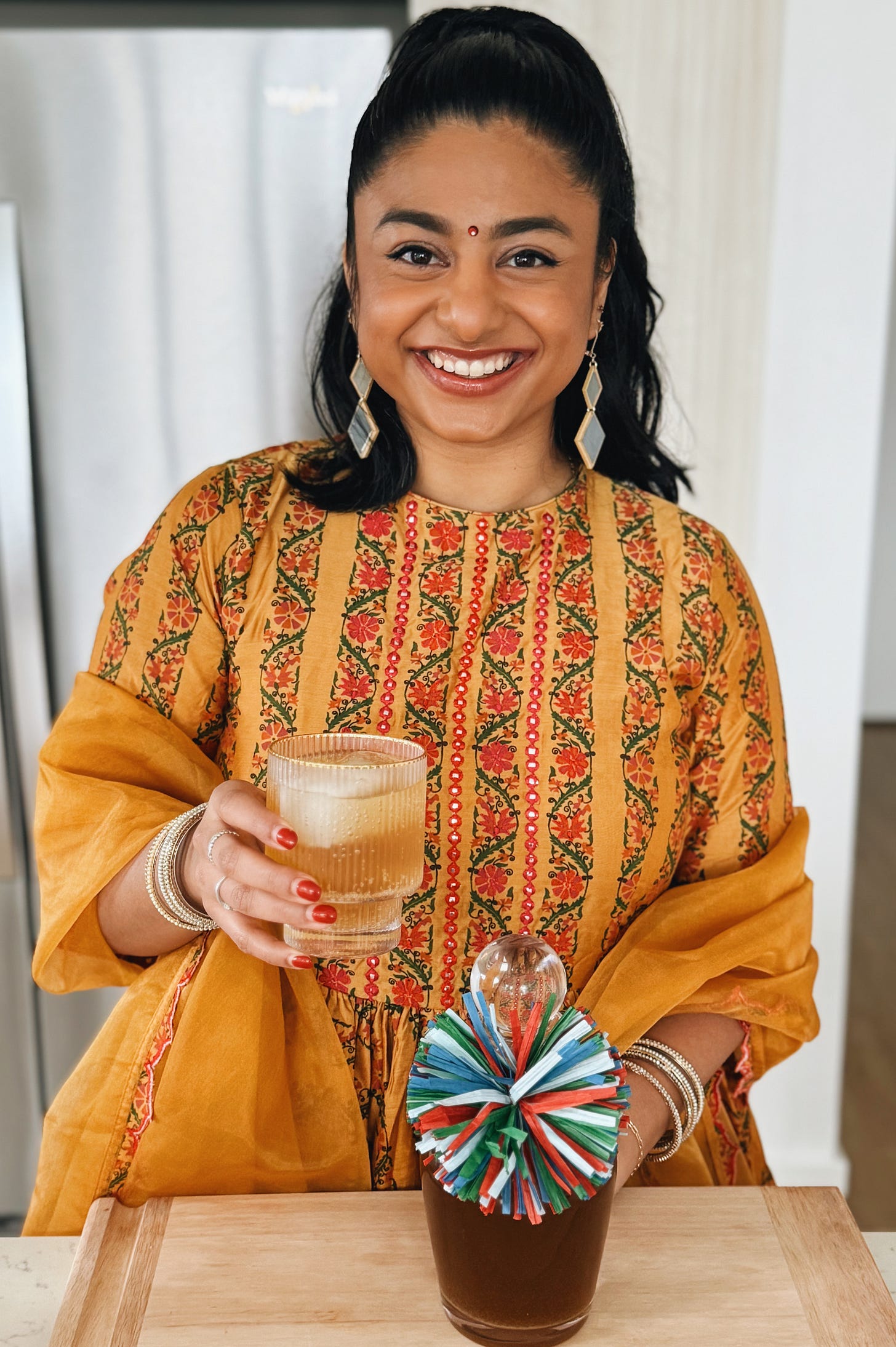
While sitting on the patio of Pure Project brewery last month, I spoke with Mahapatro about her Indian roots, her journey to become a beverage blogger, her process to develop cocktails and how she uses her recipes to increase representation of foods from Odisha and other regions of India.
This interview has been edited and condensed.
Lauren J. Mapp: How did you get started and what led you to becoming a food and beverage blogger?
Natasha Mahapatro: I've always loved entertaining, I've always loved connecting people over good food and drink. I lived in Washington, DC, and while my nine to five required me to be 'on' constantly, one of my favorite ways to unwind and relax is having people over, having good food, just enjoying each other's company and entertaining.
Combining it all, I decided to start hosting a supper club where I would ask my guests 'What is your favorite cuisine? Or what are you interested in having when you come over?' I would use that as an opportunity to challenge myself in the kitchen, which I think is one of my favorite parts about cooking and what makes it so fun for me.
I would essentially take the flavors of that cuisine that they mentioned, whether it's French, Indonesian, whatever it is that they're feeling, and fuse that with flavors and Indian cooking techniques to create a mashup menu reflective of both of those cuisines, Indian and the other cuisine that they mentioned. I would create a whole dinner menu including drinks and desserts, and just have people over.
I really loved and enjoyed it so much when folks were like, 'Wait, can you share this recipe with me afterwards?,' which led me to start my blog, the Tash Mashup.
LJM: Tell me a little bit about your cultural background and how that kind of shapes who you are.
NM: Growing up I always lived on this identity of not being Indian enough, or not being American enough. Over the years, it gave me the opportunity to really figure out what my identity is and who I am on my own terms.
Food was really helpful in getting me there because it was something that I'd always grown up loving. At the end of the day, that is what connects me back most — outside of my family — to my roots and to my culture. In the current day, it almost still surprises me, because younger me would be very surprised to hear this, but now I am just loud and proud about who I am and my culture.

Showing up for the culture each and every day in my recipes is something that is incredibly important to me.
Even in my conversations with my mom, which I just cherish so much, I'll (say), ‘I miss you and I'm missing this dish that you make.’ Her being able to share it with me over the phone, then me going to the grocery store immediately after getting the ingredients and making something that tastes and feels like home is really, really cool for me.
LJM: When you think about all the summers that you've spent in Odisha, what ingredients come to mind?
NM: One of my favorites is definitely rooh afza, which is essentially a rose syrup that has a lot of herbal notes to it. It's one of my favorite things, especially when I don't have a set menu and folks are coming over. I like to replace it anywhere grenadine is used, like in a Dirty Shirley or a Shirley Temple without any alcohol.
It's delicious, but you use a little bit of this rose-flavored syrup to create such a complex yet delicious pairing. That's something that's very reminiscent, especially because in India growing up that syrup was used and mixed with milk and folks would drink it when it's really hot outside as a way to cool down.
For me now in the summer months, I incorporate a lot of rose and that flavor profile specifically in my cocktails and mocktails.
LJM: There's this idea in America of the country being a 'melting pot,' and you were talking before about kind of struggling to embrace your identity as both an Indian woman and as an American woman. Do you feel like this blog is one of the ways that you are melding your culture with the broader multicultural identity of the U.S.?
NM: That is the most important thing because my identity is who I am and that's who I will forever be. Being able to embrace that by learning more and tapping into, 'Oh, this is a spice that I've never heard of, but it is used in Trinidadian cooking,' or being able to use my travels and my exposure with my friends and people that I meet from other cultures.
I think that is the beauty of living in a country where we have access to Ethiopian food for dinner, or being able to have a South African dinner for a weekday meal. I think there is something to be said about the way in which America and the culinary scene is progressing.
Do I feel like we have work to do? One hundred percent. Speaking about my own culture, I feel like the Indian restaurant scene is growing, but at the end of the day I see a lot of similar flavors in the mocktails, or I see predominantly North Indian food being represented in the industry. I'm very excited when I'm sharing these recipes to say 'This is a spice that is commonly used in cooking in the state of Andhra Pradesh,’ a different state that people might not be as familiar with, but here's an opportunity to introduce, to share and offer that knowledge.
As I develop recipes, I think there's also a responsibility to do that research, have that understanding and take that time. At the end of the day, if I'm going to be an authority in this space, I need to make sure that I'm doing that work, too. And while I am proud to be of Indian heritage, I don't know everything about my heritage. Learning it and being able to fuse it with my American heritage is important to me.
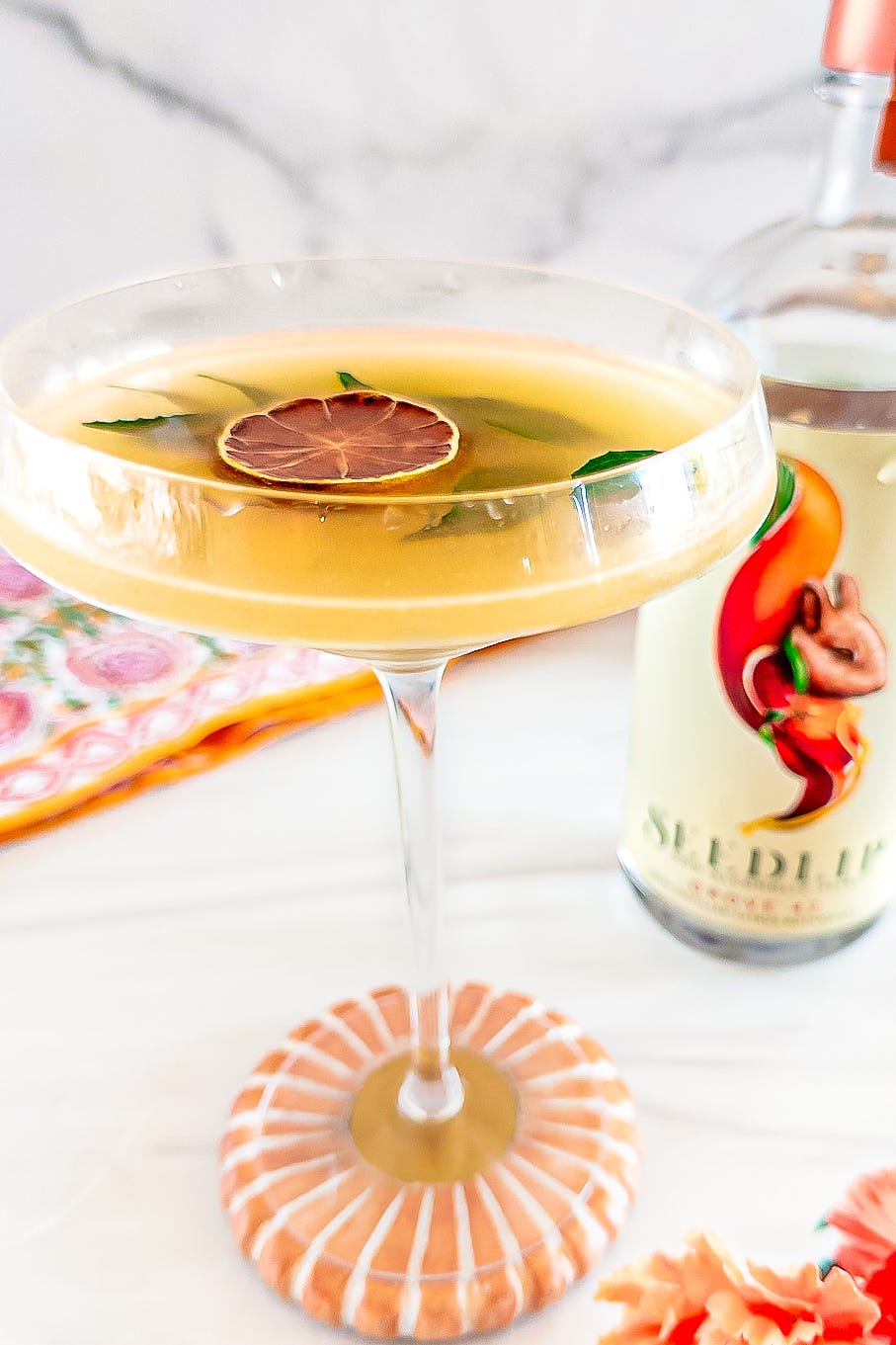
LJM: As you've been developing drink recipes, why is it important for you to feature non-alcoholic cocktails?
NM: When I entertain, I've always offered a mocktail or non-alcoholic beverage. For me, the biggest thing is that doesn't mean it's mango juice in a plastic cup.
No, I'm talking, putting interesting flavors together in a way that works. Putting it in a pretty glass — I'm very passionate about this, it should not be served in a plastic cup when you're getting a beautiful coupe glass for your Espresso Martini.
I feel like that's always been important to me: making people feel comfortable when they are in my home. In my culture, we believe there is nothing more precious than having a guest in your home and treating them in a way that makes them feel all the feels. That is what I learned from my mom, my mom learned it from her mom, and it has passed down generations.
When I say I'm a beverage blogger, I think I would be remiss (to skip mocktails). Yes, cocktails are great, but there's so much more.
LJM: What do you think makes a good cocktail?
NM: That is an amazing question. I know this may come off as repetitive, but I think it's the same principle of balance.
A lot of times what I've heard is 'I'm not going to have a mocktail because I feel like it'll just be too sweet. One note. One flavor profile. If you're thinking about juice, typically sweet. At a lot of events that I've gone to, you'll just have orange juice with Sprite, or they can put mango, pineapple and whatever else juice we have behind the bar and top it off with soda water for you.
Ultimately if sweet is the flavor profile you're looking for, you'll get that. But what I think makes a really good mocktail is that balance of sweetness.
There definitely needs to be an element of sweetness, but I also love kombucha, steamed teas - jasmine tea, mint, Moroccan mint tea. Teas have such a nice flavor and lend themselves really beautifully to an excellent mocktail. Something that I really am intentional about for both cocktails and mocktails is the power of fresh citrus juice or any fresh squeezed fruit juice.
LJM: Of all the drinks that you've made -- either alcoholic or zero-proof, what are a few that really stand out to you? When did you say 'Wow! I really nailed it this time’?
NM: There is so much that does not make it to the blog, even though folks will try it and be like 'You need to put this on the blog,' and I'm like 'It is not ready yet.'
So, I'm my hardest critic, but I love this question because it allows me to just take a beat and reflect. I'm trying to lean in to pausing, celebrating and being proud of where I'm at.
With that being said, I would say, top three. I'll start off with a mocktail, a Curry Leaf Martini. It uses Seedlip, which is a non-alcoholic spirit that I love and always have on my bar cart because it is just so nuanced. I'm really excited about savory cocktails as I've learned more about bartending and building cocktails for my blog, so I wanted to make a really excellent, savory mocktail that would be perfect for a Mother's Day brunch.
Another one that I'm very proud of is a Gulab Jamun Old Fashioned.
Gulab jamun, I would say, is India's favorite dessert. It's essentially a doughnut hole dipped in a sweet, cardamom-rich syrup. Friday night in my house is Bollywood movie night, and I wanted to make myself one cocktail. I had gulab jamun in the fridge, and I was like 'I don't want to be bothered with making simple syrup. Let me use some of the syrup in the gulab jamun. It created my favorite way to have an old fashioned.
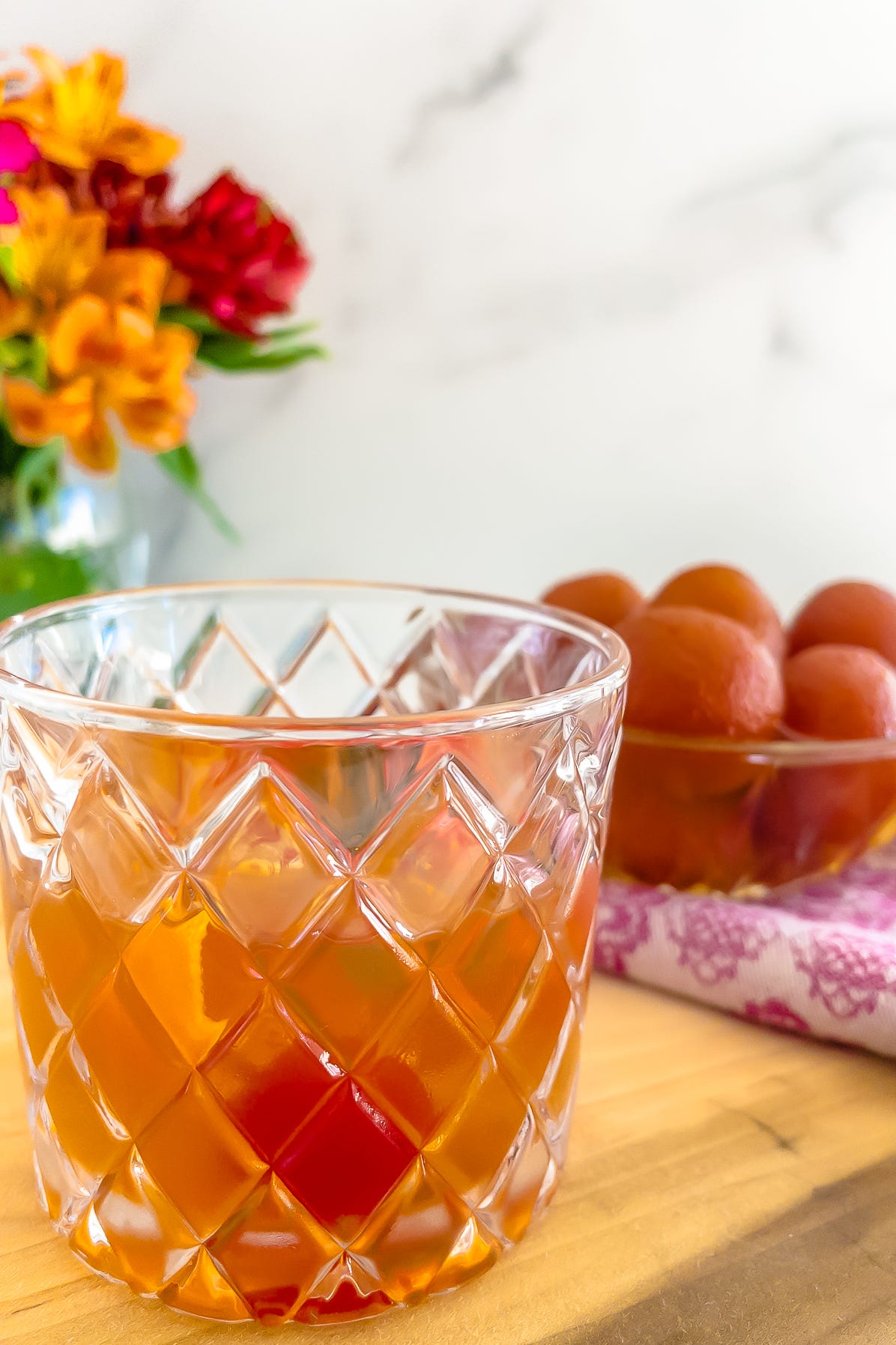
Last but not least is a drink that is very near and dear to my heart because it's something that I make for a lot of folks when they come over. It is my take on an Espresso Martini, which uses fresh ground cardamom and rosewater, and a cold foam on top.
It's something that always makes me very happy because every time I serve it to my closest friends and family, it gives them that conviction that I'm exactly where I need to be. There's just a beauty of being surrounded by the incredible support system I have. The Espresso Martini is the one they request the most often.
LJM: Talking about how there are some drinks that don't make it onto the blog, what are some of the ones that you're like, that's just not the vibe?
NM: While there's a lot that hasn't made it onto the blog, I actually challenge myself to figure out a way to get it on there and find the right balance of flavors. There was a point in time, especially after I saw such a positive reception to the Gulab Jamun Old Fashioned recipe, where I was like, 'I need to make more Indian desserts into cocktail form.'
From an ideology standpoint, you think it would be easy enough. But there's a lot of milk powder, which is called Khoya, in Indian desserts. Rasgulla, which is very famous, is made with paneer, which is essentially cottage cheese.
When you think about the translation into a drink, there are probably ways that you could do it — I feel like maybe even clarifying it, the sky's the limit — but I really try to limit the number of ingredients. I would say 90% of the recipes on my blog have five ingredients or less because I want to focus on everyone from home bartenders that have never made a cocktail before, to the most seasoned bartenders like yourself.
LJM: What’s next for you?
NM: Knowing how big of a festive season Diwali is in Indian culture — even here in America it's translated beautifully into communities across the country, which I absolutely love — I will be putting out an ebook with tons of recipes that are all about entertaining around Diwali in early October. It will include quite a few sweet recipes, including some that have been tried and tested. For the past few months, I've been working on figuring out how to get that proportion of sweetness just right.
Up Next: Roasted lemon-rosemary cocktails
Inspired by the Limón de León rosemary and lemon latte at my favorite coffee shop, Lovesong in North Park, this week’s cocktail will feature a homemade rosemary syrup and roasted lemon juice. Make sure to subscribe so you won’t miss when the cocktail recipe drops.
Also, you may have noticed I’ve been shifting around with the publishing days to see what works best for reaching all of you. Thank you for your patience as I play around with this.
After a month of looking at the metrics — and many hours working on an upcoming, multi-part project (stay tuned) — I will be going back to my Tuesday/Thursday schedule starting next week.


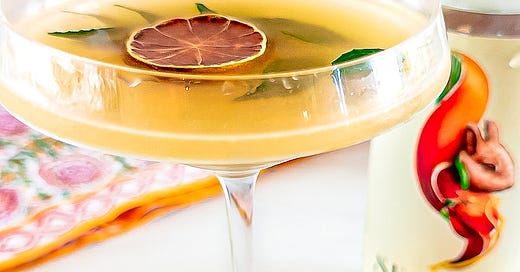


Such a great conversation! As someone new to San Diego (and a huge foodie) I look forward to following along and finding some new places to try!